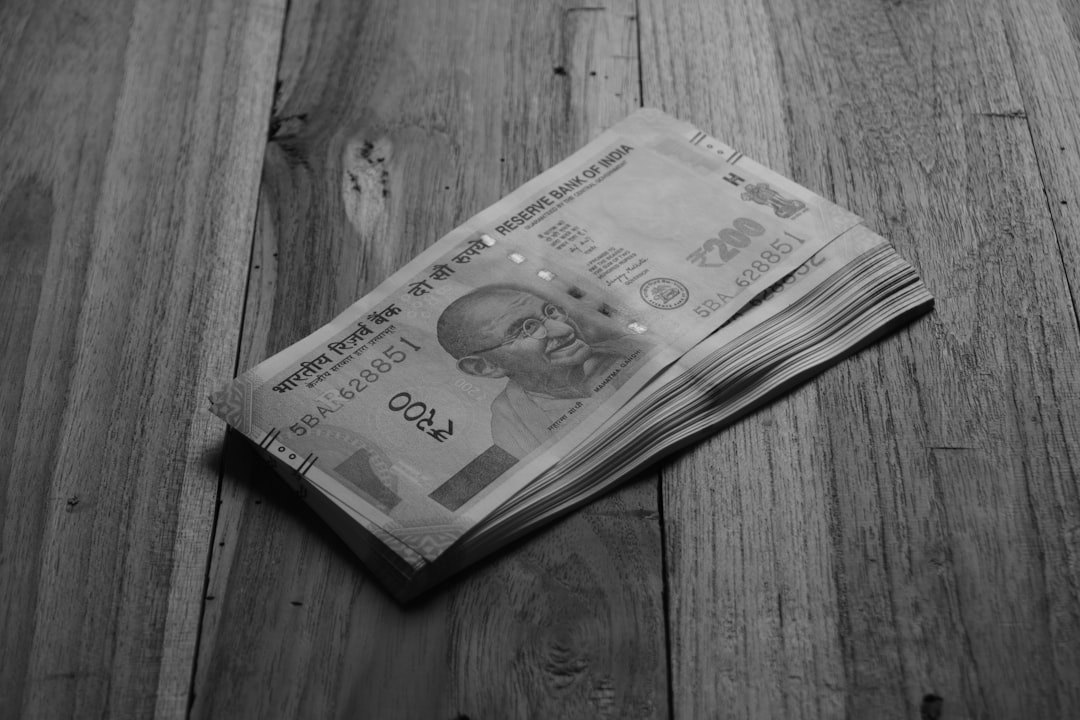Building a Portable Money Management System for Travelers

Introduction
Traveling the world as a digital nomad offers freedom, adventure, and the chance to experience cultures that most people only read about. That lifestyle, however, also brings a unique set of financial challenges. Money that is easily accessible in one country may be blocked by a foreign transaction fee in another. A bank account that works perfectly at home can become a source of headaches when a new government imposes capital controls. And the rise of cryptocurrency adds both opportunity and complexity to the equation.
A portable money management system is a deliberately designed set of tools, processes, and habits that let you earn, spend, save, and report money no matter where you set up your laptop for the day. It is not a single app or a single account; it is an ecosystem that balances accessibility, security, legal compliance, and cost efficiency. The goal of this guide is to walk you through the thinking behind such a system, the essential components you need, and the concrete steps you can take to build one that fits your travel style.
Understanding the Needs of Mobile Money Management
Before you start assembling accounts and apps, take a moment to clarify the specific financial demands your nomadic life will place on you. The following questions help to surface the most important considerations.
- Currency exposure – How often will you be dealing in USD, EUR, GBP, or local currencies? Do you need to hold multiple fiat currencies simultaneously?
- Income streams – Are you paid by a single employer, multiple clients, platform payouts, or a mix of freelance work and passive income?
- Spending patterns – Do you spend heavily on accommodation and travel services, or is most of your budget allocated to food, coworking spaces, and local experiences?
- Regulatory environment – Which countries will you stay in for longer periods? Some jurisdictions have strict reporting rules for foreign bank accounts or cryptocurrency holdings.
- Risk tolerance – How comfortable are you with using newer financial technologies such as decentralized finance (DeFi) or stablecoins?
Answering these questions creates a mental map of the financial terrain you will navigate. It also informs the choices you make later when selecting banks, wallets, and budgeting tools.
Core Components of a Portable Money Management System
A robust system rests on six pillars: multi‑currency banking, digital payment platforms, cryptocurrency solutions, budgeting and tracking, backup & recovery, and legal/tax compliance. Each pillar can be satisfied by a range of providers; the key is to choose a combination that complements the others.
Multi‑Currency Banking
Traditional banks often excel at security and regulatory compliance but fall short on flexibility for travelers. Look for banks that:
- Offer fee‑free international ATM withdrawals up to a reasonable limit.
- Provide free or low‑cost foreign currency exchange within the app.
- Support multiple base currencies without opening separate accounts for each.
- Have a strong online banking platform that works reliably across borders.
Neobanks such as Revolut, Wise (formerly TransferWise), and N26 are popular because they meet most of these criteria. For those who prefer a more established institution, certain global banks (e.g., HSBC Expat, Citibank) provide expatriate packages that include multi‑currency accounts and dedicated support.
Digital Payment Platforms
Even with a solid bank, you will frequently encounter merchants that accept only certain digital wallets. Maintaining a handful of widely accepted payment platforms ensures you can pay for everything from rideshares to coworking memberships.
- PayPal – Still the most universal online payment processor. Useful for freelance platforms and e‑commerce.
- Stripe – If you run your own online business, having a Stripe account can reduce friction for customers worldwide.
- Apple Pay / Google Pay – Mobile wallets that let you tap‑to‑pay in many countries without exposing your physical card number.
- Local e‑wallets – In some regions (e.g., Alipay in China, Paytm in India) a local wallet is essential for everyday purchases.
Cryptocurrency Solutions
Cryptocurrency can serve as a hedge against currency devaluation, a fast way to move money across borders, and a source of investment returns. However, it also introduces volatility and regulatory scrutiny. A balanced crypto strategy includes:
- A custodial exchange – Platforms such as Coinbase, Kraken, or Binance provide easy fiat on‑ramps and off‑ramps, and often support stablecoins that mirror the value of major fiat currencies.
- A non‑custodial wallet – Hardware wallets (Ledger, Trezor) or mobile wallets (MetaMask, Trust Wallet) give you full control over private keys and reduce reliance on a single service.
- Stablecoins – USDC, USDT, and DAI can act as a “digital cash” that moves instantly with low fees while staying pegged to a fiat value.
- Tax‑tracking tools – Software like CoinTracker or Koinly helps you calculate gains, losses, and income for reporting purposes.
Budgeting and Tracking
Without clear visibility into where your money is going, even the best banking setup can become a source of stress. Choose a budgeting app that:
- Syncs automatically with your bank and card transactions.
- Supports multi‑currency reporting.
- Allows custom categories for nomadic expenses (e.g., visas, travel insurance, coworking).
- Provides visualizations and alerts for overspending.
Popular options include YNAB (You Need A Budget), Mint, and the free open‑source tool Firefly III, which you can host on a personal server for added privacy.
Backup & Recovery
Data loss or device theft can cripple a traveler’s finances. A layered backup strategy protects you from both technical failures and physical loss.
- Cloud backup – Encrypted backups of wallet seed phrases, budgeting data, and important documents stored in services like Sync.com or Tresorit.
- Physical backup – Write down seed phrases on metal plates and store them in separate luggage pieces.
- Redundant accounts – Maintain at least two banking relationships so that if one is frozen you have an alternative route for funds.
Legal and Tax Compliance
Nomadic life often means you cross tax residency thresholds, trigger foreign account reporting obligations, or need to prove the source of crypto funds. Building compliance into your system from the start avoids costly surprises later.
- Know your residency status – Track the number of days spent in each country; many jurisdictions use a 183‑day rule.
- File required forms – For US citizens, this includes FBAR (FinCEN Form 114) and FATCA Form 8938. Other countries have similar reporting regimes.
- Maintain documentation – Keep invoices, contracts, and proof of income in an organized folder (cloud‑based but encrypted).
- Use tax software – Solutions like TurboTax (US), TaxAct, or internationally focused tools such as Taxamo can simplify filing.
Step‑by‑Step Build of Your Portable Money Management System
Below is a practical roadmap that turns the conceptual pillars into a working system. Follow each step, adapt it to your personal circumstances, and test the result before relying on it for critical transactions.
Choose a Primary Multi‑Currency Bank
- Research providers – Compare fees for ATM withdrawals, foreign exchange spreads, and account maintenance. Look for a bank that supports the currencies you use most.
- Open the account – Most neobanks allow you to sign up entirely online with a passport and proof of address. Some require a video verification; be prepared with a stable internet connection.
- Enable two‑factor authentication (2FA) – Use an authenticator app rather than SMS whenever possible to protect against SIM‑swap attacks.
- Order a physical card – Even if you plan to rely mostly on digital payments, a physical card is a safety net for places that do not accept contactless or mobile wallets.
- Set up alerts – Configure low‑balance, large‑transaction, and foreign‑withdrawal notifications to stay aware of activity.
Set Up a Secondary Banking Relationship
Having a backup bank reduces risk if your primary account is frozen, experiences a technical outage, or is blocked in a particular country.
- Choose a traditional bank with an international presence (e.g., HSBC, Citibank) or a second neobank that operates in regions where your primary bank may be restricted.
- Repeat the security steps: 2FA, alerts, and a physical card.
Enable Seamless Online Banking
- Link your accounts – Connect your primary and secondary banks to your budgeting app using API keys or secure credentials.
- Test transfers – Perform small internal transfers between the two accounts to confirm that fees are low and processing times are acceptable.
- Schedule regular sweeps – Automate a weekly transfer of any excess cash from your secondary account into a higher‑interest savings product (e.g., a high‑yield savings account or a money‑market fund).
Pick a Digital Wallet Suite
- Install Apple Pay or Google Pay on your phone and add your primary card. Test it at a local merchant.
- Create a PayPal account if you do not already have one. Link it to both banks so you can fund PayPal directly without moving money through a credit card.
- Research local wallets for the countries you will visit next. For example, if you plan to stay in Southeast Asia for a month, download GoPay (Indonesia) or GrabPay (Malaysia) and fund them via your primary bank’s international transfer feature.
Add a Cryptocurrency Layer
- Open a custodial exchange account – Choose a platform that is regulated in a jurisdiction you trust and that offers stablecoins.
- Verify identity – Complete KYC to lift deposit and withdrawal limits. Keep a copy of your verification documents in your encrypted cloud backup.
- Buy a small amount of stablecoin – Transfer it to your exchange wallet to test the on‑ramp process. Verify that the exchange’s fee structure aligns with your expectations.
- Set up a non‑custodial wallet – Purchase a Ledger Nano S+ or similar hardware wallet. Initialize it, write down the recovery seed on a metal plate, and store the plate separately from the device.
- Transfer a portion of stablecoins from the exchange to the hardware wallet. Confirm that you can view the balance on a mobile app (e.g., Ledger Live) without exposing the private keys.
- Install a crypto tax tracker – Connect your exchange and wallet addresses to a service like CoinTracker. Run an initial sync to ensure transaction data is being imported correctly.
Secure All Access Points
- Password manager – Store all login credentials, recovery codes, and PINs in a reputable manager such as 1Password or Bitwarden. Use a strong master password and enable biometric unlocking on your phone.
- Device encryption – Turn on full‑disk encryption for laptops and enable a passcode for smartphones.
- VPN – Install a reputable VPN service and configure it to start automatically on unsecured networks (e.g., cafés, airports). This masks your IP address when accessing banking portals.
- Regular updates – Keep operating systems, apps, and firmware up to date to patch known vulnerabilities.
Create a Backup Strategy
- Export budgeting data – Export CSV or JSON files from your budgeting app weekly and store them in an encrypted cloud folder.
- Backup wallet seeds – In addition to the metal plate, take a photo of the seed phrase and store the encrypted image in the same cloud folder.
- Duplicate important documents – Passport scan, visa pages, insurance policies, and tax forms should all be stored securely online and also printed as a hard copy kept in a waterproof pouch.
- Test restoration – Simulate a device loss by restoring your budgeting data and wallet seed on a fresh device. Verify that everything works before you actually need it.
Automate Recurring Payments
- Subscription services – Set up automatic monthly payments for coworking spaces, cloud storage, and VPN subscriptions using your primary bank’s direct debit feature.
- Savings contributions – Schedule a recurring transfer from your primary checking to a high‑interest savings account or a diversified ETF portfolio.
- Crypto dollar‑cost averaging – If you want to accumulate stablecoins or a long‑term asset like Bitcoin, use the exchange’s recurring buy feature. Ensure the amount aligns with your overall risk tolerance.
Plan for Taxes and Legal Reporting
- Track residency days – Use a simple spreadsheet to log entry and exit dates for each country. Highlight any stretch that exceeds 183 days.
- Maintain income logs – For each freelance invoice, record the client, amount, currency, and date. Tag the entry in your budgeting app as “Income – Freelance”.
- Record crypto events – The tax tracker will automatically log trades, swaps, and transfers. Periodically export a report to reconcile with your personal records.
- Schedule quarterly reviews – Set a calendar reminder every three months to review all financial accounts, verify that documentation is complete, and assess whether any tax filing deadlines are approaching.
- Consult a professional – For complex situations (e.g., dual residency, large crypto gains), engage a tax advisor familiar with cross‑border issues. Provide them with the organized documents you have already prepared.
Test the System in a Real‑World Scenario
Before you rely on the system for a month‑long trip, simulate a typical travel week:
- Withdraw cash from an ATM in a foreign currency.
- Pay for a restaurant using Apple Pay.
- Purchase a local e‑wallet top‑up.
- Convert a portion of fiat to USDC on the exchange and move it to the hardware wallet.
- Record each transaction in your budgeting app and verify that categories appear correctly.
- Run a quick tax report for the week to confirm that crypto gains are captured.
If any step fails or feels cumbersome, revisit the relevant component and adjust settings, provider, or workflow.
Managing Taxes While on the Move
Taxation is often the most intimidating part of a nomadic lifestyle, but with systematic record‑keeping it becomes manageable. Below are the major considerations and practical tips.
Determining Tax Residency
- Physical presence test – Most countries use a 183‑day rule: spend more than half the year in the country and you become a tax resident.
- Statutory residency – Some jurisdictions count days plus other ties (e.g., a permanent home, family, or economic interests).
- Dual residency – If two countries claim you as a resident, tax treaties often provide tie‑breaker rules. Understanding the treaty between the involved states can prevent double taxation.
Tip: Keep a digital “passport” of entry/exit stamps, airline itineraries, and visa approvals in one folder. This makes it easy to produce evidence for tax authorities.
Reporting Foreign Bank Accounts
- US citizens – Must file FBAR if the aggregate value of foreign accounts exceeds $10,000 at any point during the year. FATCA reporting may also be required.
- EU residents – Many EU countries have a “Declaration of foreign assets” requirement, especially for high‑net‑worth individuals.
- Other jurisdictions – Research the specific threshold and filing form for each country where you hold an account.
Tip: Use a spreadsheet to sum the highest balance of each account per day. If the total crosses the reporting threshold, trigger a reminder to file the appropriate form.
Crypto Taxation
- Capital gains – Most countries treat crypto as property. Selling, swapping, or using crypto to purchase goods creates a taxable event.
- Income – Mining, staking rewards, and airdrops are generally considered ordinary income.
- Reporting tools – Import transaction CSVs from exchanges and wallets into a tax tracker. The software will calculate gains/losses using FIFO, LIFO, or specific identification methods.
Tip: When you move crypto between your custodial exchange and non‑custodial wallet, treat it as a “transfer” rather than a sale. Ensure the tax tracker recognizes internal movements to avoid false gains.
VAT and Sales Tax
When you purchase services online (e.g., SaaS tools, software licenses), the seller may charge VAT based on the buyer’s location. Some platforms automatically apply the correct rate; others default to the seller’s country.
Tip: Register for a VAT‑registered business address in a low‑rate jurisdiction (e.g., EU VAT OSS) if you run a freelance business that provides services to EU clients. This can reduce the tax burden on your invoices.
Filing Frequency and Extensions
- Quarterly estimated taxes – Many freelancers must pay estimated taxes every quarter to avoid penalties.
- Automatic extensions – Some countries allow an automatic filing extension if you are out of the country at the deadline, but you still owe any tax due by the original date.
Tip: Set up calendar alerts for each quarter’s estimated tax due date. Use your budgeting app to calculate the required payment based on year‑to‑date income.
Legal Safeguards for a Nomadic Financial Lifestyle
Beyond taxes, there are legal aspects that protect your assets and ensure you can move money freely.
Know‑Your‑Customer (KYC) and Anti‑Money‑Laundering (AML) Policies
Financial institutions worldwide must verify the identity of their customers. For nomads, this can be tricky because traditional proof‑of‑address documents may not exist.
- Use a virtual address service – Companies like Earth Class Mail provide a mailing address that can be used for KYC verification.
- Leverage international banks – Some global banks accept a foreign passport and a letter from your employer as sufficient proof.
- Maintain consistent information – Avoid opening accounts under slightly different names or addresses, as this can trigger AML alerts.
Data Privacy and Encryption
When you rely on cloud services for backups, ensure they comply with strong privacy standards.
- Choose providers with end‑to‑end encryption – Services that encrypt data on the client side before it leaves your device.
- Avoid storing unencrypted seed phrases – Even in a password manager, seed phrases should be stored in a “secure note” field that adds an extra layer of encryption.
Insurance
Financial insurance can protect against loss of devices, identity theft, and even legal costs.
- Travel insurance – Look for policies that include coverage for lost or stolen laptops and smartphones.
- Identity theft protection – Some providers monitor credit bureaus and alert you to suspicious activity.
- Crypto insurance – A few platforms offer custodial insurance for assets held on the exchange. Verify the coverage limits and exclusions.
Staying Secure on the Road
Security is an ongoing practice rather than a one‑time setup. The following habits keep your money safe while you hop between airports and hostels.
Protecting Against Phishing
- Verify URLs – Always type the bank’s web address manually instead of clicking links in emails.
- Use browser extensions – Tools like uBlock Origin and HTTPS Everywhere reduce the risk of malicious redirects.
- Enable phishing‑resistant 2FA – Platforms that support hardware security keys (e.g., YubiKey) provide stronger protection than OTP codes.
Device Hygiene
- Separate work and finance devices – Use one laptop for client work and another (or a tablet) for banking and crypto activities.
- Regularly clear caches – Delete browser history and cookies after each session on public computers.
- Lock devices – Set short auto‑lock timers and use biometric unlocking only when you are confident the environment is secure.
Network Security
- Avoid public Wi‑Fi for transactions – If you must use a café network, always connect through your VPN.
- Turn off automatic Wi‑Fi joining – Prevent your device from connecting to rogue hotspots without your knowledge.
- Use a firewall – Enable the built‑in firewall on laptops and configure it to block inbound connections.
Tips for Long‑Term Sustainability
A portable money management system should evolve as your travel patterns and financial goals change.
Periodic Review
Every three months, sit down with your budgeting app and review the following:
- Are you paying excessive foreign exchange fees?
- Have any accounts been charged dormant fees?
- Is your crypto allocation still aligned with your risk tolerance?
- Are any new regulatory changes affecting your current providers?
Diversify Providers
Relying heavily on a single bank or exchange can be risky if that service experiences outages or policy changes. Consider adding a third bank in a different jurisdiction every year.
Local Banking Options
When staying in one place for several months, opening a local bank account can reduce fees for domestic payments and ATM withdrawals. Research the account opening requirements ahead of time; some countries allow non‑resident accounts with a passport and proof of address.
Leverage Community Knowledge
Digital nomad forums, Reddit communities, and local meetups are excellent sources for up‑to‑date information about banking restrictions, crypto regulations, and payment solutions in specific regions.
Automate Learning
Subscribe to newsletters that track changes in international banking, crypto legislation, and tax compliance. Set up an RSS feed that delivers articles directly to a “Finance” folder in your note‑taking app.
Conclusion
Building a portable money management system is not a single purchase; it is a deliberate combination of accounts, tools, habits, and safeguards that together give you the freedom to work from any corner of the globe without financial friction. By understanding the unique needs of a nomadic lifestyle, selecting multi‑currency banks, integrating digital wallets and cryptocurrency, establishing rigorous budgeting and backup practices, and staying on top of tax and legal obligations, you create a resilient financial foundation.
The process described in this guide may feel extensive at first, but each component adds a layer of security and convenience. Start with the core—open a reliable multi‑currency bank, set up a strong password manager, and secure your devices. Then gradually add the additional pieces: secondary banks, crypto wallets, budgeting software, and tax tracking tools. Test the system before you embark on a long stay, and refine it as you gather real‑world experience.
When your finances are organized, portable, and compliant, you can focus on what truly matters: exploring new places, building connections, and turning your passions into sustainable income. The world is your office; let your money flow as freely as your ideas.
Random Posts

Ultimate Guide to Remote Work Hotspots and Gadgets
Discover top remote-work hotspots worldwide and the essential gear that keeps you productive on the go. From beach cafés to mountain lodges, this guide helps you pick the perfect spot and tech for any adventure.
2 months ago

Smart Finance and Tax Strategies for Global Nomads
Smart finance and tax tips for digital nomads: banking, payments, compliance and asset protection made simple so you can travel worry free
2 months ago

Remote Work Paradise Latin America Top Picks
Explore Latin America’s best remote work havens with fast internet, low cost, coworking hubs and rich culture, ideal spots for digital nomads seeking work and adventure.
1 week ago

Ultimate Guide to Nomad Friendly Cities and Seamless Transportation
Discover the top nomad-friendly cities and master seamless travel with our ultimate guide, covering internet reliability, visa ease, coworking hubs, and smart transportation tips for hassle-free remote work worldwide.
1 month ago

Secrets of High Performing Digital Nomads
Discover the hidden playbook of top digital nomads, how disciplined freedom, a growth oriented identity, and proven systems turn remote life into high performance. Follow concrete steps to thrive wherever you work.
2 months ago
Latest Posts

Essential Software Every Remote Professional Should Use
Master remote work with essential tools: instant messaging like Slack, high definition video calls such as Zoom, and asynchronous voice apps. Streamline communication, stay connected and boost productivity.
1 day ago

Mastering Remote Work Productivity for Digital Nomads and Freelancers
Learn proven habits, tools, and tactics that help digital nomads and freelancers stay focused, deliver quality work, and maintain a sustainable lifestyle while traveling the world.
1 day ago

Tech‑Friendly European Towns Perfect for Remote Living
Discover Europe’s best small towns where fast internet, affordable living and vibrant tech communities let you work remotely while soaking up historic charm, lakeside views or mountain air.
1 day ago